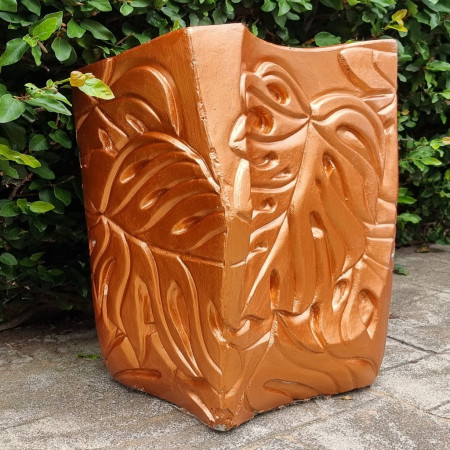Metallic Paint - Copper
Availability:
- A permanent pure acrylic copper metallic paint for interior and exterior.
- For arts, crafts, interior and exterior feature walls, doors, plant pots and general décor.
Copper Metallic Paint
Copper is a naturally occurring metal and is more red/orange than Bronze. This paint is the colour of copper wire that has just had its insulation removed.
While the surface of copper, bronze and brass structures are often oxidised to a greenish patina, our paints do not discolour. If you require a paint with an aged patina appearance of these metals then see our product category "Aged Metallic Effects".
High quality, pure acrylic metallic paints with glossy finish and metallic lustre. For Interior and Exterior applications.
Perfect for artists, feature walls, cornices, exterior house highlights, kitchen cupboards, doors, pillars, plant pots, garden furniture, hotel foyers, movie & theatre sets, arts & crafts and general décor.
Enjoy the environmental and health benefits of using water-based metallic paints.
Water-based technology suitable for application by brush & roller, airless spray and air spray equipment.
Hard, durable, stain resistant, easy to clean finish.
(If you want to apply Metallic Paints directly to surfaces that normal paints won't adhere to then please see our Super Adhesion Metallic Paints. Our Super Adhesion Metallic Paints can be applied directly to a wide range of surfaces including plastics, resins, metals and wall tiles.)
What you need to know about application
If Painting feature walls, large surfaces, very smooth surfaces or spraying our Metallic Paints then it is important that you read our document, "How to Paint with Metallic Paints". You can download this document from this web page, from the Technical section of this website or we can email it to you. The document covers painting with brush & roller and spraying.
You can find a summary of the most important points in the toggle page "Spread Rate & Application". .
Unit Size |
|
| Unit Size |
110ml
1 Litre
5 Litre
20 Litre
|









 How to Paint with Metallic Paints
How to Paint with Metallic Paints



